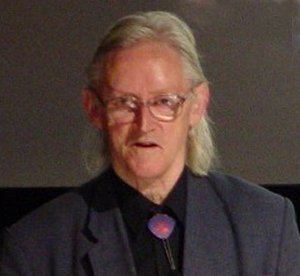Residence United Kingdom Awards Young Medal and Prize Name Nicholas Phillips Fields Physicist | Alma mater Imperial College Influenced Derek Abbott Citizenship British | |
 | ||
Born 26 September 1933Finchley, London, United Kingdom ( 1933-09-26 ) Institutions De Montfort University (DMU)Loughborough University (LUT)Sperry Rand Research CentreEnglish ElectricAWRE Aldermaston Known for Display HologramsPhillips-Bjelkhagen Ultimate (PBU) Notable awards Thomas Young Medal (1981) Died May 23, 2009, Loughborough, United Kingdom | ||
Education Imperial College London | ||
Nicholas (Nick) John Phillips (26 September 1933 – 23 May 2009) was an English physicist, notable for the development of photochemical processing techniques for the color hologram. Holograms typically used to have low signal-to-noise ratios, and Phillips is credited as the pioneer of silver halide holographic processing techniques for producing high-quality reflection holograms.
Contents
Career
Phillips graduated with a BSc degree in physics from Imperial College, London. He was a senior researcher at the Atomic Weapons Research Establishment (AWRE), Aldermaston, from 1959-1962. He was a research scientist at the Sperry Rand Research Centre, Sudbury, Massachusetts, United States, from 1962-1963. He was a theoretical physicist at English Electric, Whetstone, Leicester, UK, from 1963-1965. From 1965-1993 he was appointed at Loughborough University, where he rose to Professor of Applied Optics. In October 1993, he was appointed as Professor of Imaging Science at De Montfort University, Leicester, UK. Phillips was the co-founder in the early 1970s of Holoco, who using lasers supplied by The Who (that had been used in laser light shows during their concerts), constructed the Light Fantastic exhibitions as The Royal Academy of Arts, London, in 1977-8. The company became Advanced Holographics in 1980 when The Who withdrew their financial backing, and was based in Loughborough, UK, and later became part of Markem Systems.
Research and Achievements
Phillips is credited with the development of bleaching and processing techniques, which made it possible to record multi-color reflection holograms from a single wavelength laser. His research interests include holographic displays, edge-lit holograms, optical encoding for security, photopolymers, and novel micro-optic systems, and he has numerous patents in these areas.
Holographic Art
Phillips developed a technique for producing white light holograms that work in dim lighting conditions, which are now widely used in the world of holographic art.
Awards
Phillips was awarded the Institute of Physics Thomas Young Medal (1981) in recognition for contributions to holography, particularly the development of high quality holograms for visual display. He is a Fellow of the Institute of Physics.
